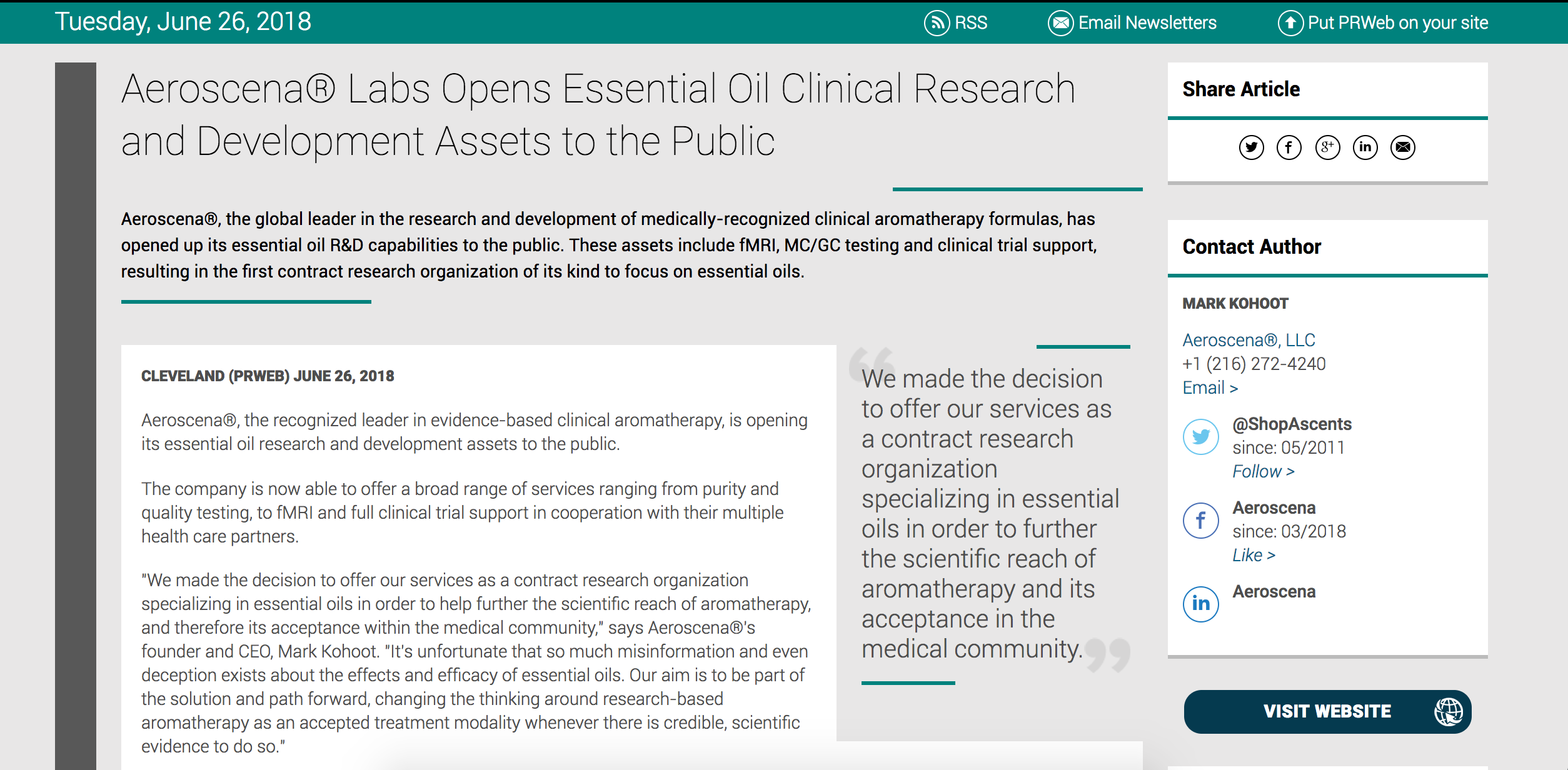
Aromatherapy as a First-Line Pain Management Treatment in Clinical Settings

Aromatherapy has been co-opted by many companies which have infused it with a “new-age” sensibility that, understandably, leaves medical professionals cold. The truth is that there are many studies that demonstrate aromatherapy’s efficacy as a first-line treatment for pain management in clinical settings, including post-surgical recovery units and maternity centers.
A 2016 systemic review and meta-analysis of existing research into aromatherapy’s pain management effects (1) found there was a significant positive effect (compared to placebo or treatments as usual controls) in reducing pain reported on a visual analog scale. It was effective in treating several types of pain, but showed the most promise in treating postoperative pain (SMD = −1.79, 95% CI: −2.08, −1.51, p < 0.0001) and obstetrical and gynecological pain (SMD = −1.14, 95% CI: −2.10, −0.19, p < 0.0001).
The review’s results demonstrate that aromatherapy is particularly suited for laboring women or for post-caesarean section pain management. This type of scientific evidence is one reason Aeroscena® is in the preliminary stages of an IRB sanctioned clinical trial with one of the world’s most respected hospitals’ birthing center to study the effects of aromatherapy in that setting. Another study to measure improved reduction in pain and thus improved recovery time for knee replacement surgery at a major west coast university medical center is also underway.
One of the biggest barriers to adoption of aromatherapy by medical practitioners seems to be at least partially driven by a lack of exposure to the science behind clinical formulas’ development and the mechanisms of action behind the oils. The abundance of the misinformation and false claims in the public realm have also created a negative perception of the field that we work to overcome.
Essential oils contain constituent compounds which have demonstrated specific effects via scientific research. Clinical quality essential oils which make up aromatherapy formulae, have been lab tested via MS/GC technology in order to ensure that each batch of oil contains the correct ratio and type of these constituents. This is the only way to know that the oil, and therefore, the resultant formulas, will have the intended health benefits, be it anxiety or insomnia relief, more energy, or in this case, pain reduction.
There is a long list of essential oil constituents which have shown analgesic or antinociceptive effects (2). These include p-Cymene, Carvacrol, Linalool, Eugenol, Menthol, (−)-α-Bisabolol, Cinnamaldehyde, Citronellal, Citronellyl Acetate, α-Phellandrene, Vanillin, Borneol, Myrtenol, Pulegone, Citral, Thymol, Limonene, Nerol, Anethole, Nerolidol, (−)-Carvone, Farnesol, β-Caryophyllene, and β-Epoxy-Carvone. These elements are found in many common essential oils.
The research-based and demonstrated efficacy of these components (and many others) is what informed our decisions around the formulation of our clinical aromatherapy products.
For instance, we know that lavender is rich in linalool (about 30% of its chemical make up), which makes it excellent for pain reduction and is therefore an important part of our pain management formula. Damask Rose contains high concentrations of citronellal and farnesol, two more known analgesic essential oil constituents. It, too, plays a significant role in our pain formula, along with other specifically-selected oils that have shown similar effects. Other oils with the appropriate compounds as compared to pharmaceutical databases, are blended together to produce the desired results.
Clinical aromatherapy for pain reduction is one alternative to addictive pharmaceuticals, especially when used in concert with other treatment modalities, or non-additive analgesics. Given the opioid epidemic in the United States and around the world, it is only becoming more urgent that we find new approaches to pain management. However, this will require a shift in the way medical professionals think about aromatherapy. There is no doubt that much of the marketing spin around it has resulted in skepticism about its use in clinical settings.
At Aeroscena®, our goal is to continue to lead the industry in clinical aromatherapy research, education, and advocacy. In this way, we will create a path forward for doctors, nurses and other professionals to utilize aromatherapy as a non-additive, non-invasive treatment option for a range of symptoms, including the management of pain.
(1) The Effectiveness of Aromatherapy in Reducing Pain: A Systematic Review and Meta-Analysis
Shaheen E. Lakhan, 1 , 2 , * Heather Sheafer, 1 and Deborah Tepper 3
Pain Res Treat. 2016; 2016: 8158693.
Published online 2016 Dec 14
(2) Analgesic-Like Activity of Essential Oil Constituents: An Update
de Cássia da Silveira E Sá R1, Lima TC2, da Nóbrega FR3, de Brito AEM4, de Sousa DP5.
Int J Mol Sci. 2017 Dec; 18(12): 2392.
Published online 2017 Dec 9.








Leave a comment
This site is protected by hCaptcha and the hCaptcha Privacy Policy and Terms of Service apply.